Pvt William H Paugh Flag Returned to Family

Most people know what the LGBTQ+ pride flag looks like. The half dozen-color rainbow flag shows up everywhere during LGBTQ+ pride calendar month in June (sometimes with a few extra colors). If y'all're in a city, you'll likely see rainbows in shop windows, and no matter where you live, you'll probably run across a few rainbow-washed logos from your favorite brands on social media during Pride calendar month. But evidence up to a Pride parade, and it'southward more than just the rainbow flag that you'll see. The rainbow is merely i of many.
While the rainbow flag works as a full general flag for all LGBTQ+ people, other parts of the queer community — transgender people, asexual people, bisexual people, genderqueer people, and more — accept created their own flags. Separate flags are necessary so that non-queer people and even queer people who aren't a part of those groups can recognize that LGBTQ+ doesn't just hateful gay — information technology ways pansexual, non-binary, intersex, and many more than identities that fall after the 'Q' in the acronym. Equally Monica Helms, creator of the transgender pride flag, put information technology, "I say the rainbow flag is similar the American flag: everybody's underneath that. But each group, like each state, has their own individual flag."
The flags too give communities a sense of pride. And visible symbols of pride and support tin can exist powerful, as LGBTQ+ activists know well. Nosotros can retrieve of no improve way to celebrate every facet of the LGBTQ+ customs than by letting all of their flags wing. Read on to meet what each LGBTQ+ flag looks like, and the important sexual orientations and gender identities they represent.

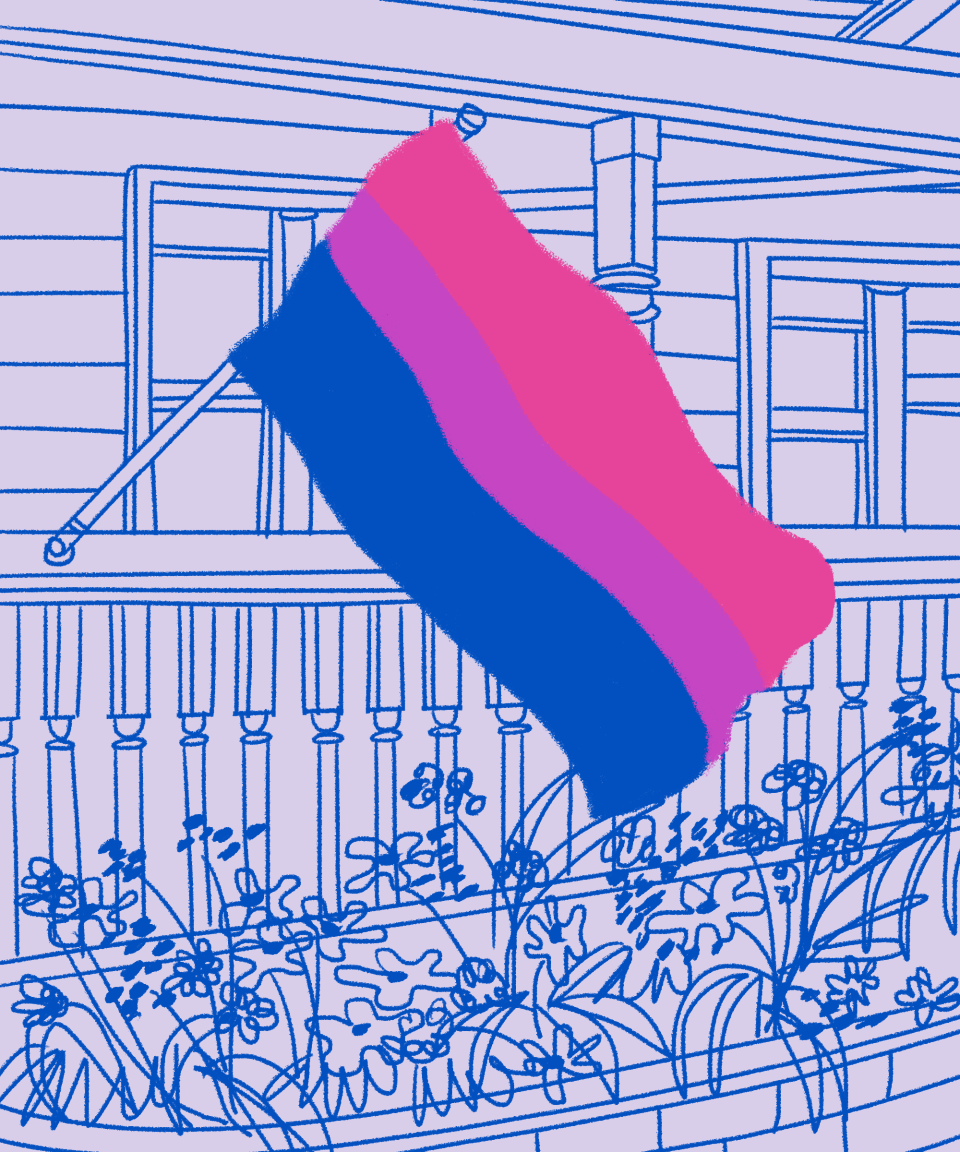
Bisexual flag
The bisexual flag was created in 1998 by Michael Page, who wanted to boost the visibility of bisexual people outside of the greater LGBTQ+ community.
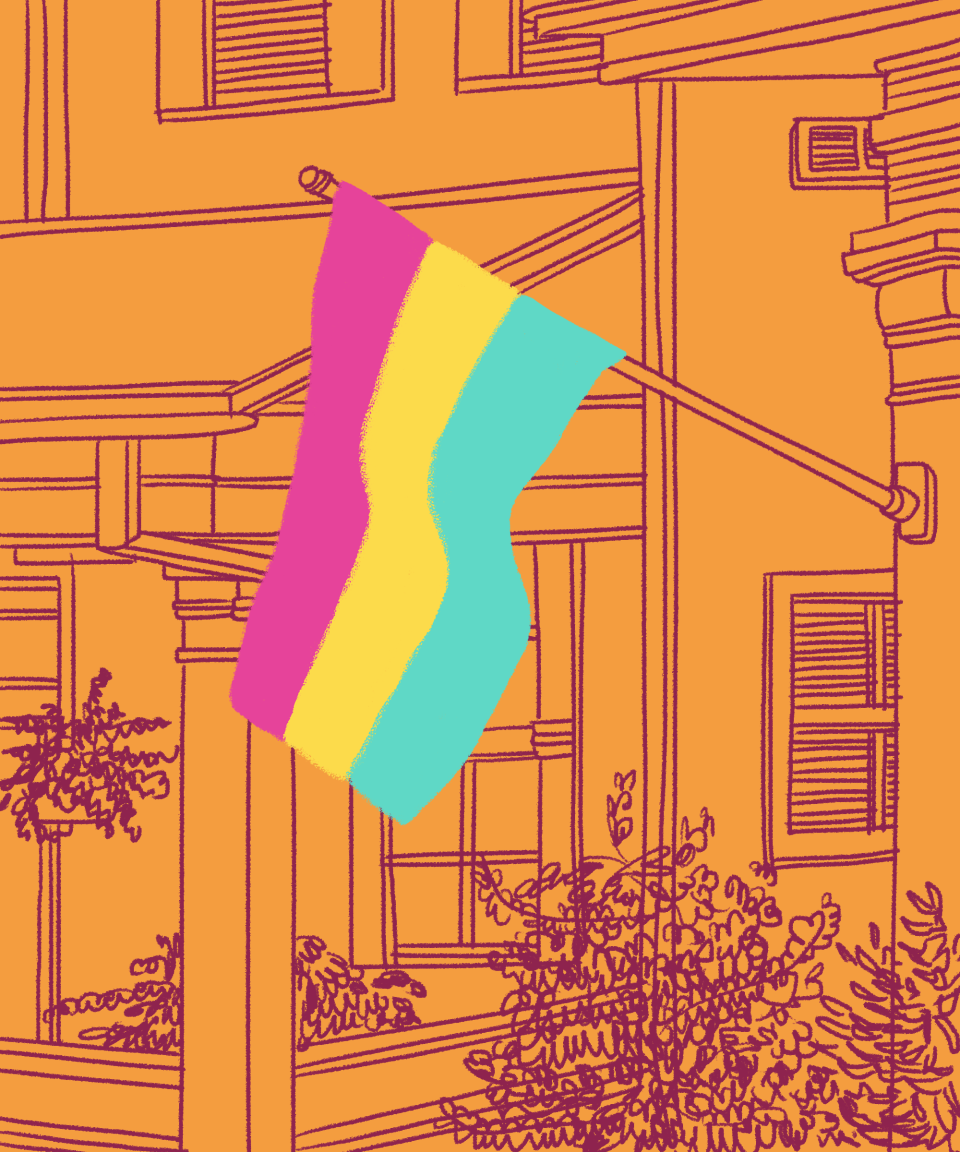
Pansexual flag
The pansexual flag starting time popped up in 2010, and is used to distinguish pansexual people from bisexual people. Although some pansexual people may as well call themselves bisexual, the "pan" implies attraction to more ii genders. So, the pan-pride flag uses pink for people on the female-spectrum, blue for people on the male-spectrum, and yellowish for non-binary or genderqueer people.

Lipstick lesbian flag
The lesbian flag or lipstick lesbian flag was designed past Natalie McCray in 2010. The original version featured a pink lip impress in the left-mitt corner, but the version without the lip impress is at present more than widely used. Some lesbians oppose the use of this flag considering McCray's blog includes racist, biphobic, and transphobic comments, and because the pink colors and "lipstick lesbian " terminology don't include butch lesbians. A number of other designs have been suggested, however, in that location isn't a consensus almost which 1 to utilize and McCray'due south design remains the almost popular.
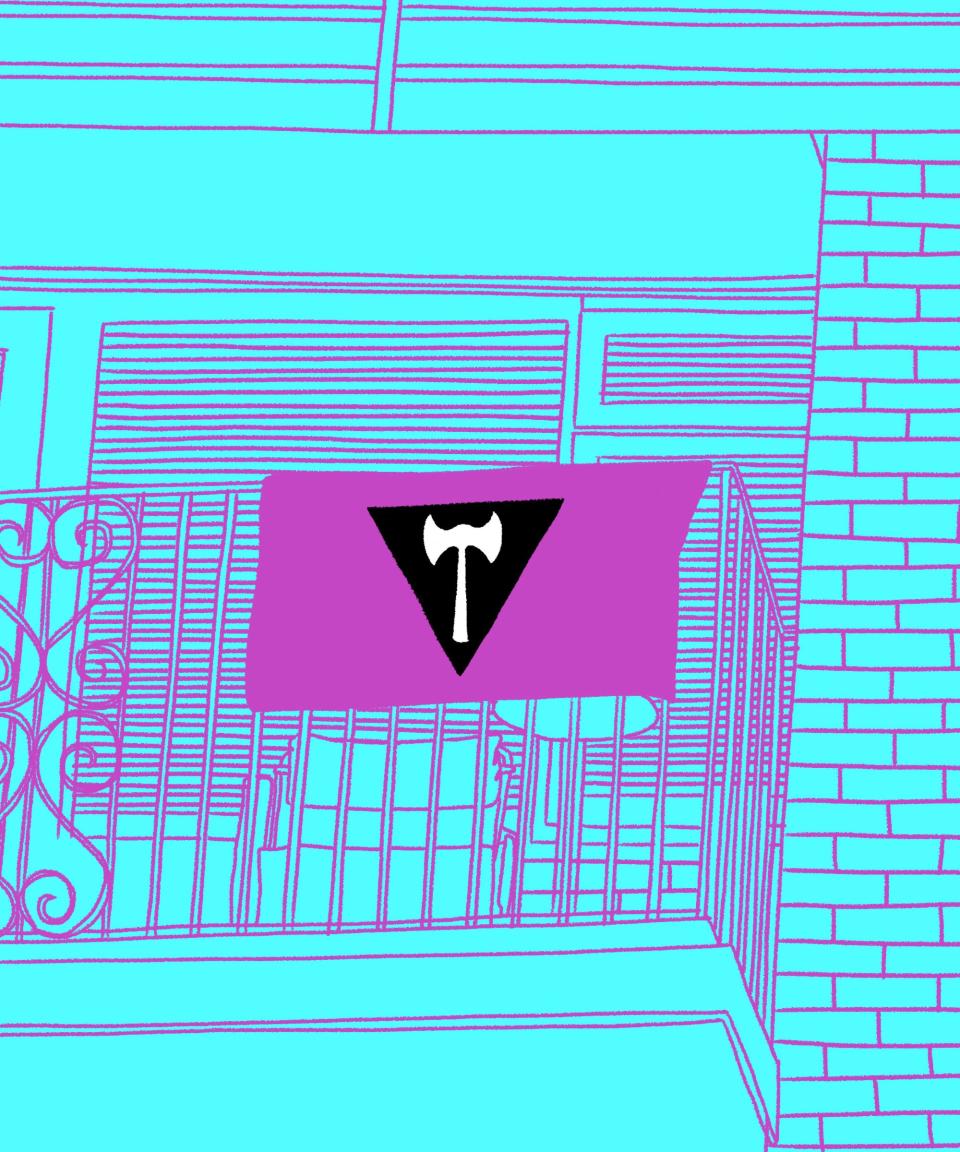
Labrys lesbian flag
The Labrys lesbian flag also has a less-than-platonic origin: it was designed by a cis man, graphic designer Sean Campbell, in 1999. It'due south based on the Labrys, a double-headed axe associated with the Amazons in mythology — lesbians began using the Labrys equally a symbol of lesbian feminism beginning in the 1970s.
The black triangle represents the triangle that Nazis forced those labeled "asocial" — including lesbians — to wear in concentration camps, while the color purple is traditionally associated with queer women, dating back to the poet Sappho'due south use of violets when talking about romantic love for women.
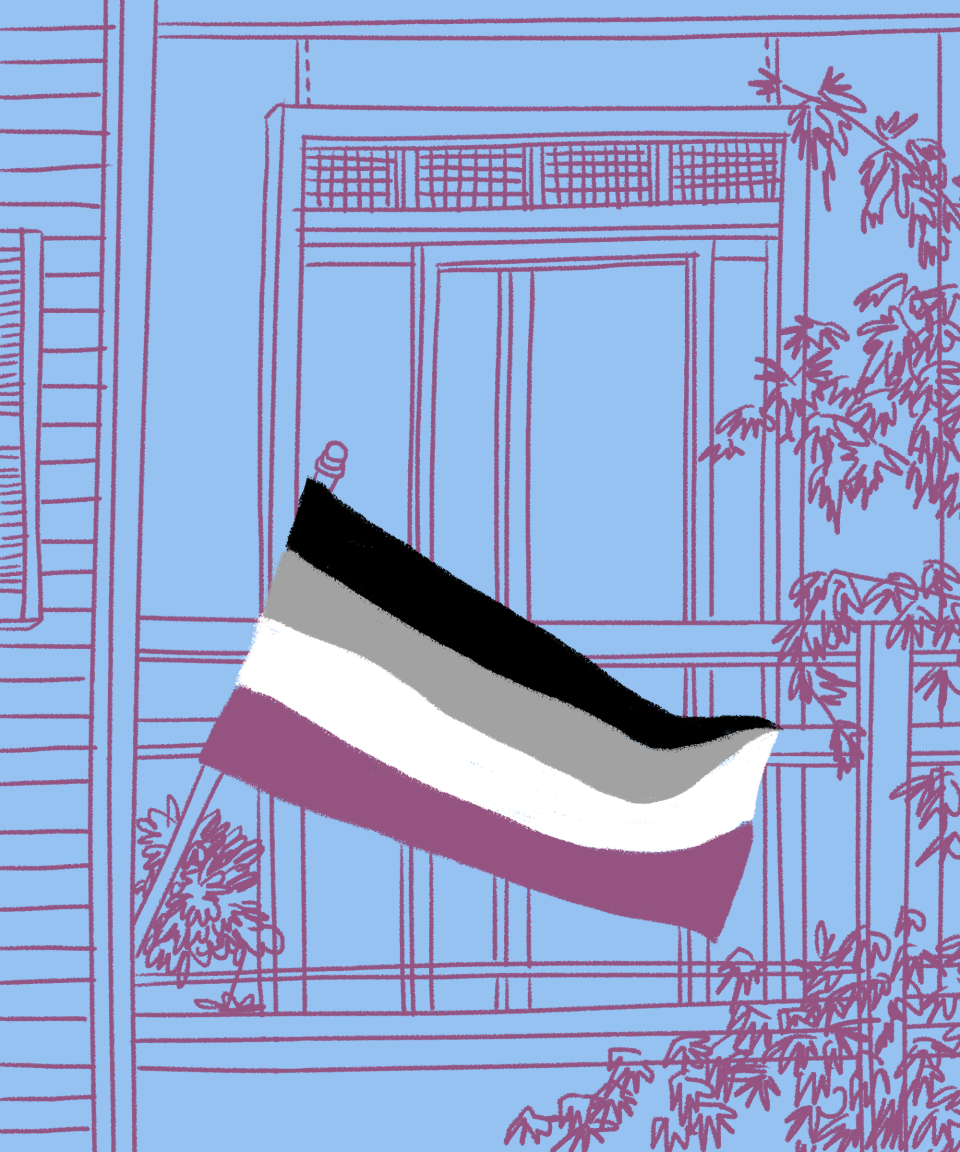
Asexual flag
In the summer of 2010, the Asexual Visibility and Pedagogy Network forth with other asexual leaders got together to design the asexual pride flag and so they could "have a symbol that belongs to all of us." Each colour has a pregnant: Blackness for asexuality (feeling no sexual allure), grayness for grey-asexuality and demisexuality (feeling sexual attraction just sometimes), white for not-asexual partners and allies, and majestic for community.

Aromantic flag
The aromantic flag is similar to the asexual flag and agender flag. The green and light green stripes cover everyone under the aromantic spectrum, while represents nonromantic forms of dearest and attraction, and the gray and black represent all sexualities under the aromantic spectrum.
Helms once said. "The stripe in the centre is white, for those who are intersex, transitioning, or consider themselves having a neutral or undefined gender. The pattern is such that no affair which fashion you wing it, information technology is always correct, signifying united states finding correctness in our lives."
Transgender flag
A transgender woman and Navy veteran named Monica Helms created the transgender flag in 1999. "The stripes at the elevation and lesser are light blue, the traditional color for baby boys. The stripes side by side to them are pink, the traditional color for infant girls," Helms in one case said. "The stripe in the eye is white, for those who are intersex, transitioning, or consider themselves having a neutral or undefined gender. The pattern is such that no affair which way you fly it, it is always correct, signifying us finding correctness in our lives."

Genderqueer flag
Marilyn Roxie made the genderqueer flag in 2010, and then finalized the pattern in 2011. They made the flag with stripes of colour similar to other LGBTQ+ flags, and chose the colors to stand for different genderqueer identities: Lavender, a mixture of blue and pinkish to correspond androgynes and androgyny, white to stand for agender identity, and green, the inverse of lavander, to represent all those who fall exterior of the gender binary.

People of color-inclusive flag
In 2017, a Philadelphia-based activist group called More Color More than Pride added black and brown stripes to the top of the traditional LGBTQ+ flag to remind the queer community to be inclusive of people of color.
Carpenter has said. "We are nevertheless fighting for bodily autonomy and genital integrity, and this symbolizes the right to be who and how nosotros desire to be."
Intersex flag
The intersex flag was invented past Morgan Carpenter in 2013, to represent wholeness and simplicity. "The circle is unbroken and un-ornamented, symbolizing wholeness and abyss, and our potentialities," Carpenter has said. "We are still fighting for actual autonomy and genital integrity, and this symbolizes the right to be who and how we desire to be."

Genderfluid flag
Created in 2012 by JJ Poole, the genderfluid flag has a pinkish stripe for femininity, a blue stripe for masculinity, a purple stripe for both masculinity and femininity, a blackness stripe for lack of gender, and a white stripe for all genders.

Agender flag
Around since 2014 thanks to designer Salem Ten or "Ska," the agender flag is reversible similar to the transgender flag so that information technology'due south correct no affair how information technology flies. The black and white stripes represent consummate absence of gender, grayness represents existence semi-genderless, and green represents non-binary gender.
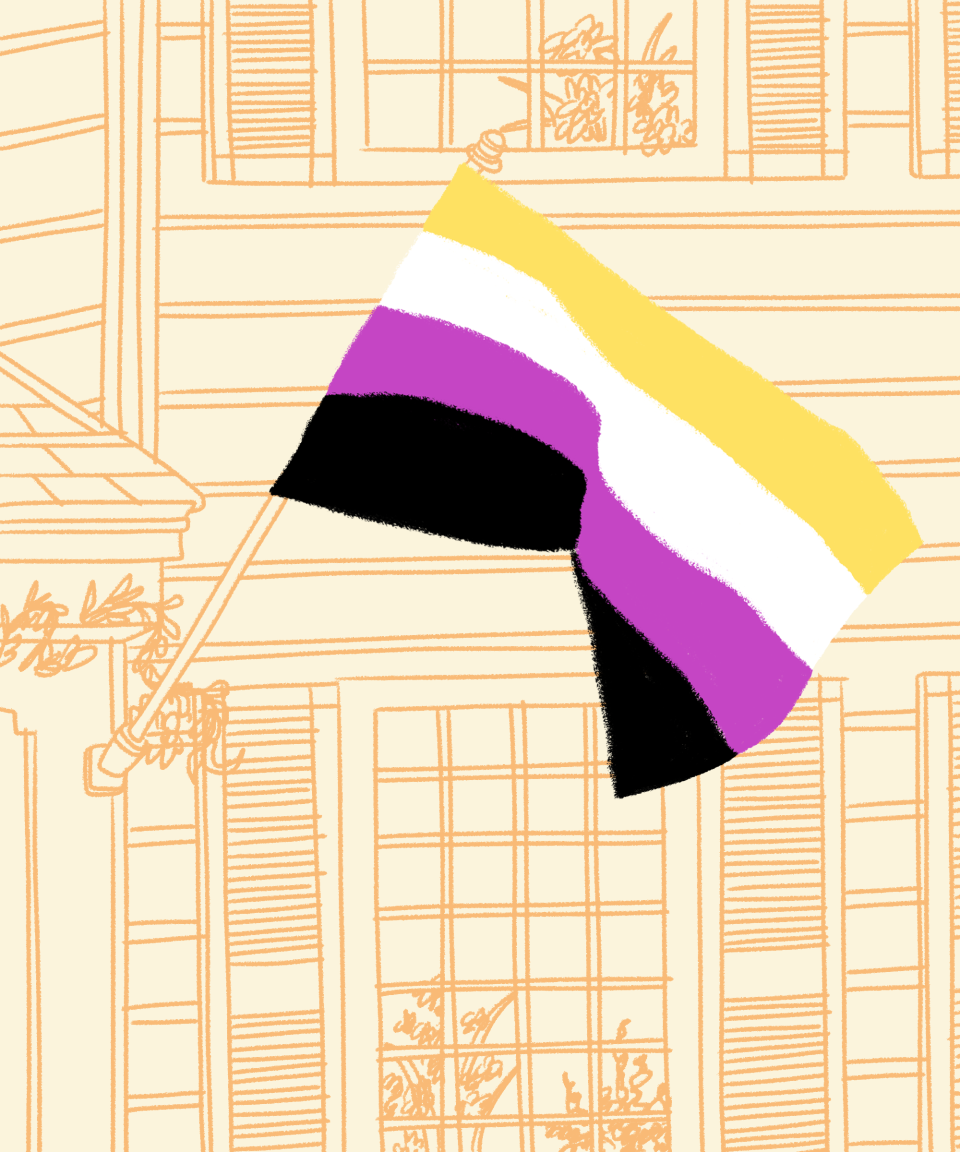
Non-binary flag
Seventeen twelvemonth former activist Kye Rowan created the not-binary flag in 2014 considering many non-binary people felt that the genderqueer flag didn't represent them well. Rowan'due south flag uses: Yellow for those whose gender exists exterior of and without reference to the binary, white for those who accept many or all genders, purple for those who experience their gender is between or a mix of female person and male, and black for those who feel they are without gender.

Polysexual flag
The polysexual flag is very similar to the pansexual flag, with dark-green replacing yellowish just still indicating attraction to people with not-binary gender identities. Polysexual people are dissimilar from pansexual people because they may not be attracted to all genders at once, only are attracted to many genders.

Leather flag
The leather flag was designed by Tony DeBlase in 1989. It'due south used equally a symbol of the leather community, which is predominantly made upwards of gay men. Although DeBlase said the interpretation was up to the viewer, some say that the black represents leather; the blue represents devotion, loyalty, and community; the white represents purity and innocence; and the red heart represents love for the customs.

Bear flag
The bear flag was designed by Craig Byrnes and Paul Witzkoske in 1995 to represent the behave community — a subculture of masculine-presenting gay, bisexual and trans men who comprehend facial and body pilus and may accept larger bodies. Byrnes and Witzkoskie fabricated 4 variations and had friends from the bear community vote for the winning design — this one. The seven colors represent the colors of different bears (the creature) around the world.
Like what you see? How about some more R29 goodness, right hither?
The Most Satisfying Sex Positions for Lesbians
"Hers & Hers" Wedding Gifts For Two Brides
Does Kombucha Help Y'all Poop?
grantjurnerridich.blogspot.com
Source: https://www.yahoo.com/lifestyle/complete-guide-lgbtq-flags-mean-191000138.html
0 Response to "Pvt William H Paugh Flag Returned to Family"
Post a Comment